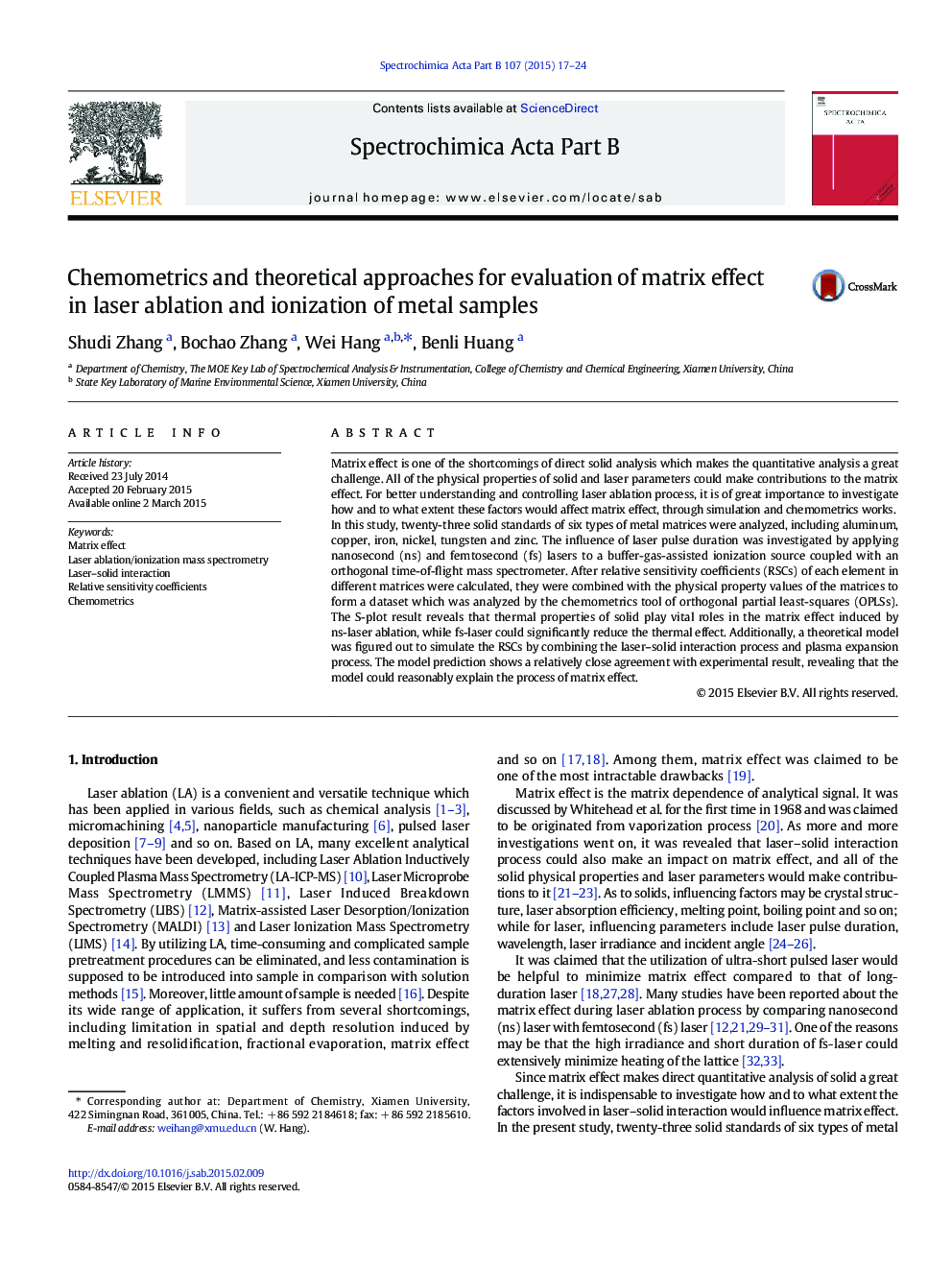| Article ID | Journal | Published Year | Pages | File Type |
|---|---|---|---|---|
| 1239617 | Spectrochimica Acta Part B: Atomic Spectroscopy | 2015 | 8 Pages |
•Matrix effect is one of the obstacles in direct solid analysis.•RSCs combined with physical properties were analyzed by chemometrics tool.•S-plot reveals thermal property playing vital role in matrix effect in ns-laser ablation.•Theoretical model was built to simulate RSCs.•Model prediction of RSCs shows a relatively close agreement with experimental result.
Matrix effect is one of the shortcomings of direct solid analysis which makes the quantitative analysis a great challenge. All of the physical properties of solid and laser parameters could make contributions to the matrix effect. For better understanding and controlling laser ablation process, it is of great importance to investigate how and to what extent these factors would affect matrix effect, through simulation and chemometrics works.In this study, twenty-three solid standards of six types of metal matrices were analyzed, including aluminum, copper, iron, nickel, tungsten and zinc. The influence of laser pulse duration was investigated by applying nanosecond (ns) and femtosecond (fs) lasers to a buffer-gas-assisted ionization source coupled with an orthogonal time-of-flight mass spectrometer. After relative sensitivity coefficients (RSCs) of each element in different matrices were calculated, they were combined with the physical property values of the matrices to form a dataset which was analyzed by the chemometrics tool of orthogonal partial least-squares (OPLSs). The S-plot result reveals that thermal properties of solid play vital roles in the matrix effect induced by ns-laser ablation, while fs-laser could significantly reduce the thermal effect. Additionally, a theoretical model was figured out to simulate the RSCs by combining the laser–solid interaction process and plasma expansion process. The model prediction shows a relatively close agreement with experimental result, revealing that the model could reasonably explain the process of matrix effect.
